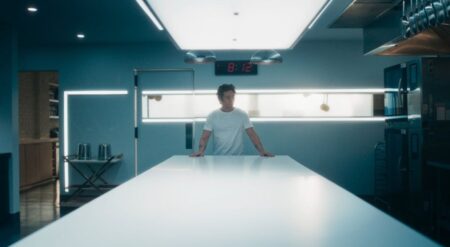
Star Trek: Picard is the return of fan-favorite captain, now admiral, Jean-Luc Picard (Patrick Stewart). When I look back at my history with Star Trek, what it taught me, and specifically how I taught college students before I changed careers, I think back to Jean-Luc. This is exactly why I entered this new series with hesitation. That said, episode one began the series with resounding excellence that when episode two, “Maps and Legends” dropped, I immediately watched.
In the last episode, we saw our beloved captain living as the Hermit of La Barre on his vineyard, a dream we knew he had, and yet grief and regret filled the air around him. We learned about his separation from Star Fleet, the organization he devoted his life to and that fans have come to know as, well, for lack of a better phrase, the good guys. Additionally, episode one set up the trajectory of the series, mapping out the ban on synthetics (read androids) after a rogue one caused massive destruction on Mars which took may lives and Picard’s best friend, Data. But when a young woman enters his life, Picard gets pulled into a world connected to Data, the friend he has nightmares about, the one he wants to hold to, he’s called to justice and action one last time.
Although Dahj (Isa Briones), the synthetic woman who contacted Picard for help, was killed last episode, this episode picks up with Picard searching for her twin, a second synthetic made from Data’s neurons. In “Maps and Legends” we see the series take a step back from the high impact action of the last episode and focus on setting up the path to come. This episode is slower but immersive nonetheless.
There are three pivotal takeaways from episode three. The first is that Romulans, staunchly against all synthetics and limited in technology, lie at the center of Dahj’s death. More specifically, the Zhat Vash, a group of Romulans who’s stance against cybernetics and synthetics runs beyond hatred and into fear and pure loathing of its very existence, are the ones leading this push to wipe out the remaining synthetics. The second is that while the Romulans are against synthetics, they’re working on a Borg Cube that they call the artifact, disconnected from the Collective. They’re stealing Borg technology and profiting from it, while also dissecting the Borg on board. This is where Dahj’s twin is, and as we begin to learn more of her, we realize that extracting her, saving her will be increasingly difficult task thanks to how embedded she is in the Romulan operation.
But, the height of “Maps and Legends” is, of course, its titular character. Star Trek: Picard showed us new depths to the character in the last episode and in “Maps and Legends,” it continues to do the same. It would have been easy for the showrunners to create a story in which we see Picard living as the biggest hero in the universe, still leading missions, still succeeding. But instead, we see him fail. Picard failed when Dahj was killed. He failed when he let his rage loose on a reporter. And now, in “Maps and Legends” he fails again.

About midway through the episode, Picard decides to return to Star Fleet. He walks into the building and confidently requests a small ship, a crew and in a moment that made me fangirl, he asks to be demoted to Captain as to now raise any suspicions while he tracks down the man creating synthetics and Zhat Vash hunting his creations. It’s a moment, that we’ve seen in media before. The retired hero comes back for one last time, he’s greeted with open arms, and he goes on his journey. But that doesn’t happen here.
Instead of welcoming him, instead of giving him his request, he’s met with valid frustration. “The sheer f***ing hubris” is what Admiral Clancy (Ann Magnuson) says to him. And it’s here that Picard fails again. It isn’t just a refusal of support but a rebuttal of Picard’s attempt to even enter the building. She dismisses him as an old man, desperate to matter, and it’s then viewers realize how far our silent hero has fallen.
Additionally, the resulting conversation does so much more to the lore of Star Fleet than in other series of the franchise. While “because it was no longer Star Fleet” echoes into “Maps and Legends,” Clancy’s response to Picard and her assertion that Star Fleet can decide who lives and who dies, moves the “Good Guys” of the Star Trek universe into the realm of powerful people who have lost their path and clearly sets them as an opposition force to the justice Picard seeks.
Bathing Picard in failure in the first two episodes, Star Trek: Picard has created a truly unique story and a proper continuation that embodies the lead character’s strong moral compass and his steadfast pursuit of keeping true North. And with that “Maps and Legends” is an even better exploration of his character than the first episode and I can not wait for episode three.
New episodes of Star Trek: Picard Season 1 is available now on Paramount+.
Picard, Episode 2 - Maps and Legends
-
Rating - 10/1010/10
TL;DR
Bathing Picard in failure in the first two episodes, Star Trek: Picard has created a truly unique story and a proper continuation that embodies the lead character’s strong moral compass and his steadfast pursuit of keeping true North. And with that “Maps and Legends” is an even better exploration of his character than the first episode…






